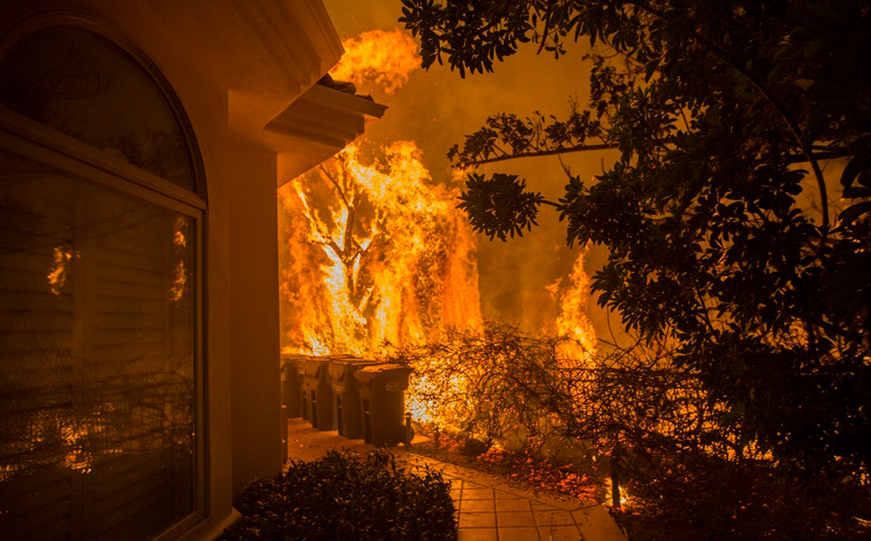Climate change has lengthened dry seasons throughout the United States, resulting in more frequent and devastating wildfires. The U.S. Department of Agriculture predicts the areas in the U.S. affected by wildfires will likely double by 2050. Despite this fact, new buildings and subdivisions continue to be built in or near forested areas prone to wildfires.
Older buildings often weren’t built to withstand the threat of fire. This was clearly demonstrated by the $15-19 billion in property damage caused by the recent Camp and Woolsey fires in California. In recent years, however, building materials companies have started to make products with fire-resistance as a feature. Most wood-framed homes won’t stand up to a wildfire the size of the Camp or Woolsey fire, but certain building materials can help maintain the integrity and safety of the home for a few extra minutes. Those few precious moments can make the difference between being overtaken by fire and getting your loved ones out the door safely.
Here are some building materials that can provide an edge against fire:
Metal Roofing
Metal roofing is a great choice for guarding your house against wildfires. According to the Metal Roofing Alliance, “metal is inherently non-combustible and offers a high degree of fire protection for your entire home.”
While very popular, cedar shake roofs do not provide adequate fire protection and homeowners with wooden roofs typically pay higher insurance premiums for that reason. Concrete tile roofing is fire-resistant, but comes with the disadvantage of being significantly heavier than metal roofing, which is extremely lightweight. Tile products also carry a large cave-in risk in the event of an interior fire or a seismic event.
While a little more expensive than traditional roofing materials, metal roofing products like CertainTeed’s Matterhorn® Metal Roofing come with Class A fire resistance. According to UL 790 (ASTM E 108) testing standards, Class A is the highest fire class rating for roofing systems and products certified as such are able to withstand the most severe fire test exposures.
Firestops
Firestops are physical barriers designed to prevent the spread of flames, deadly gases and toxic smoke through openings created during building upgrades and the installation of electrical, communications, plumbing and ventilation systems. Multifamily buildings are typically required to have firestops in place to prevent fire in one part of the building from spreading rapidly to another. Firestop systems like the HOLDRITE® HydroFlame™ Pro can effectively swell in heat and seal a room, stopping gas or smoke from escaping.
Fire caulking foam can also provide additional fire safety by insulating cavities and voids around plumbing, ventilation and electrical tubes. Fire caulking foam can also be applied around light switches, electrical outlets and electrical boxes to help mitigate fires caused by electrical storms and power outages.
The increasing threat of wildfires isn’t going away and rapid urbanization only increases the likelihood of future building fires. There are many steps homeowners and building owners can take… the best offense is often a good defense, so it’s important to keep fire resistance in mind.




